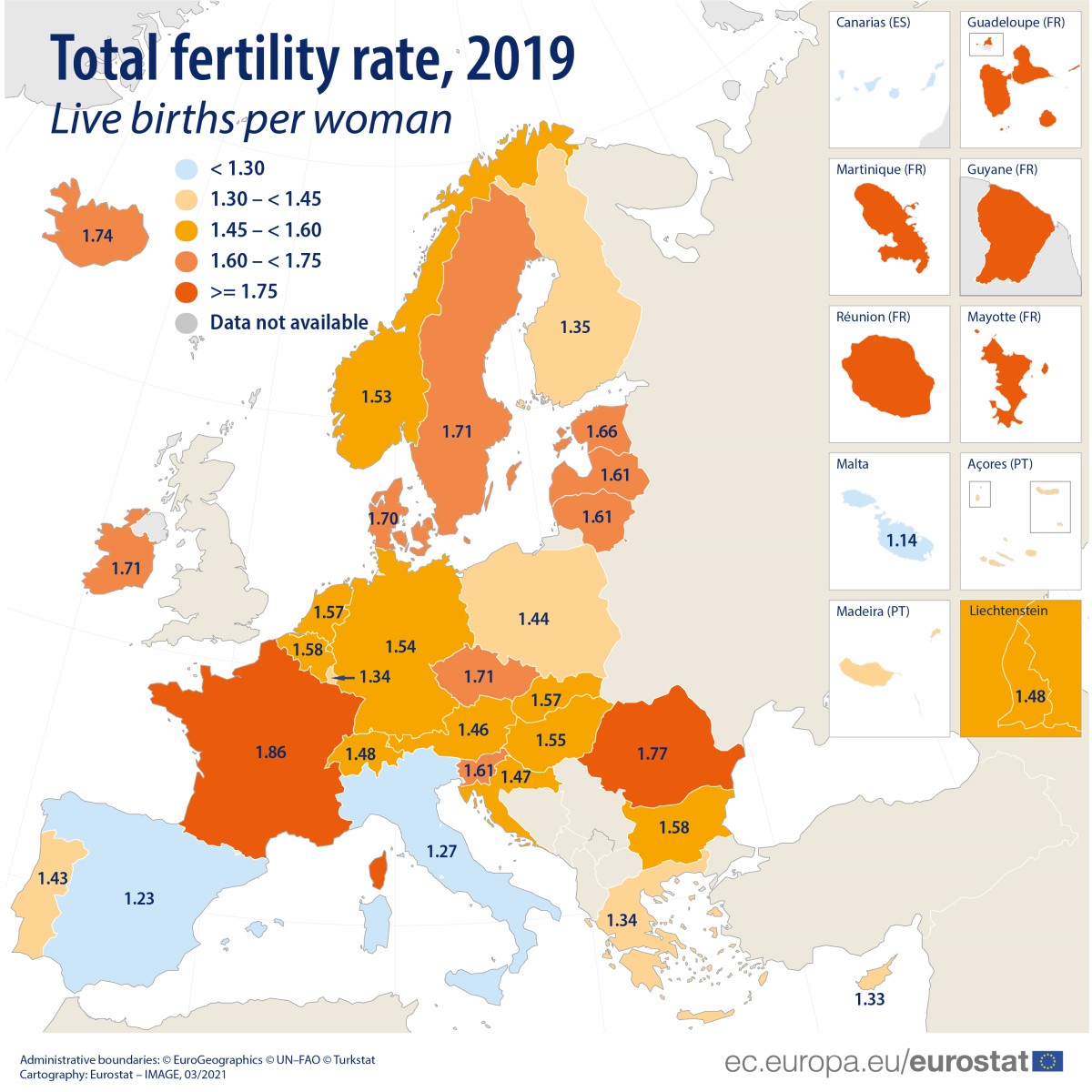Women in Hungary have more children than in Germany
EnglishWithin the European Union, the willingness to have children is the highest among women in France. The situation in Hungary has improved considerably since 2010.
Only 4.17 million babies were born in the European Union in 2019, although in 2008, when the declining trend started, this number was still 4.68 million, according to a recent report by Eurostat.
There is nothing surprising about this. The general trend is that the more developed a region is, the more the desire to have children falls. The reasons are varied: people go on studying longer so they have their first child later, besides they are becoming increasingly reluctant to give up their own comfort. On top of all that, finding the right partner may also be getting harder in developed societies.
It’s not only Europe, though, that faces such problems; the situation is similar in Japan and South Korea as well.
When examining birth rates, one of the most commonly used indicators is the total fertility rate (TFR). According to the definition by the Central Statistical Office, it shows the number of children each woman would have on average during her life if the fertility data of the given year were to become permanent. If the fertility rate reaches 2.1 in a developed country, the population will not decline even if there is no immigration. However, none of the European countries can achieve this rate.
France comes the nearest to it: the total fertility rate in 2019 was 1.86 there; an average woman in France would have 1.86 children if the 2019 conditions became permanent.
This is such a high number that it even made the South Korean government send a delegation to find out how a rich country is capable of achieving such a high birth rate. The main reason is thought to be the existence of state programs that provide support for families, but extensive immigration also plays a role, though that alone does not explain these numbers. It must be noted, though, that the trend has been declining in France for the past few years, but they are still on top of the list of European countries.
Romania comes next with 1.77, followed by the Czech Republic, Ireland and Sweden.
Fertility rate in our region
2010 |
2011 |
2012 |
2013 |
2014 |
2015 |
2016 |
2017 |
2018 |
2019 |
|
Románia |
1,59 |
1,47 |
1,52 |
1,46 |
1,56 |
1,62 |
1,69 |
1,78 |
1,76 |
1,77 |
Csehország |
1,51 |
1,43 |
1,45 |
1,46 |
1,53 |
1,57 |
1,63 |
1,69 |
1,71 |
1,71 |
Szlovákia |
1,43 |
1,45 |
1,34 |
1,34 |
1,37 |
1,40 |
1,48 |
1,52 |
1,54 |
1,57 |
Magyarország |
1,25 |
1,23 |
1,34 |
1,35 |
1,44 |
1,45 |
1,53 |
1,54 |
1,55 |
1,55 |
Horvátország |
1,55 |
1,48 |
1,51 |
1,46 |
1,46 |
1,40 |
1,42 |
1,42 |
1,47 |
1,47 |
Ausztria |
1,44 |
1,43 |
1,44 |
1,44 |
1,46 |
1,49 |
1,53 |
1,52 |
1,47 |
1,46 |
Lengyelország |
1,41 |
1,33 |
1,33 |
1,29 |
1,32 |
1,32 |
1,39 |
,148 |
1,46 |
1,44 |
Source: Eurostat
Hungary is in the middle of the table, which is a great achievement because in 2010 it still had the lowest fertility rate in the entire EU. Since then, the TFR has risen from 1.25 to 1.55, which is already slightly above the EU average of 1.53.
This means that Hungary is ahead of Germany, Austria, Poland and Finland, for example.
The birth rate is the lowest in Italy and Spain, where women tend to have their first child over the age of 30, which is considered rather late even by European standards.
Fertility rate in EU countries

The differences between the EU countries are huge, even when we look at the proportion of women giving birth who were born in a different country themselves. Mothers having a baby were 69 percent foreign born in Luxembourg, while in Austria, Sweden and Belgium, a third of newborn babies had a mother who had been born in another country.
In Hungary, this rate is 5 percent.
In Bulgaria, Slovakia and Poland it is even less: only 2 percent.
